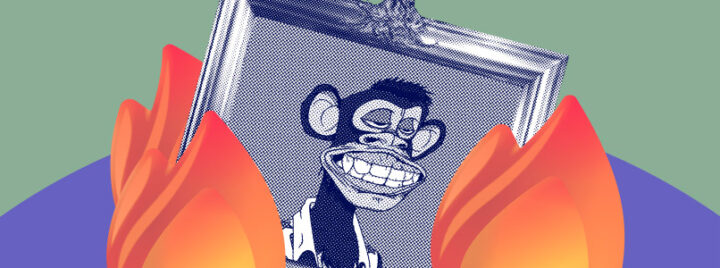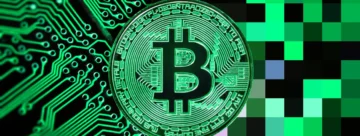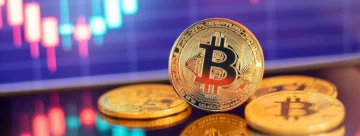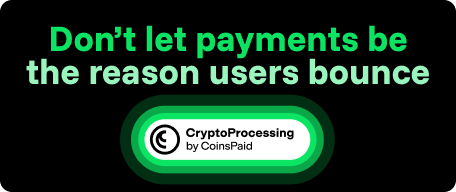Why Will NFT Market Never Return to Its Peaks?

In 2023, the cryptocurrency market is gradually regaining lost ground despite the ongoing bear market. The crypto market cap briefly surpassed $1.7 trillion for the first time since early May 2022. Against this backdrop, analysts at DappRadar reported that the trading volume of the NFT market almost reached $1 billion in November, maintaining a steady upward momentum. Sounds promising, doesn’t it?
Moreover, 2024 will mark the long-awaited halving of the Bitcoin blockchain network. Goldman Sachs analysts predict that the U.S. Fed may cut interest rates twice in the next two years, starting in Q3 2024. It seems that barring a black swan event, the situation will be more than favorable for a bull rally by the end of 2024. And that, in turn, will certainly affect the NFT market as well. So why does our headline claim that it’ll never return to its highs?

NFT Speculative Potential Dried Up
The primary reason is that the NFT market’s peak was achieved through speculation. The first noticeable spike in trading volume was due to the NBA Top Shot collectible sports cards. The activity around that project climaxed in January-February 2021. By the end of 2023, the total trading volume of the cards was over $1 billion, but that’s not the main achievement of the project. It managed to stir up the market by creating hype, which was eventually used by others.
The boom of the NFT market fell on the period from June 2021 to July 2022, which can be clearly seen in the CryptoSlam! data. The biggest “A-listers” of that time were Bored Ape Yacht Club and other projects of the Yuga Labs studio that bought out their main competitors on the rise — CryptoPunks by Larva Labs.
In fact, it was BAYC that became the information flagship of that period and of all the hype around NFTs. Here are several factors that contributed to this (in order of importance):
- Effective marketing. The media was awash with reports that another “celebrity” had bought an NFT from the BAYC collection, and celebs themselves were bragging about it on social media, generating tremendous coverage for the brand. One day, someone will write a thesis analyzing every aspect of Yuga Labs’ marketing campaign.
- FOMO. During that period, owning NFTs was not only trendy but also profitable. In the midst of the COVID-19 pandemic and the economic crisis, a chance to make easy money attracted more than a million wannabe investors and traders every month.
- Novelty. In 2021, NFTs seemed like something new, offbeat, and eye-catching. Add to that the media coverage of that time surrounding the cryptocurrency industry, and you get absolute faith in a fairy tale, “fortune favors the bold” slogans, and things like that.
But what united Yuga Labs, Larva Labs, and their many followers from that period? Today, they all fall into the PFP NFT category — their NFTs may be used as profile pictures but offer no other functions. Any attempts to grant their owners any privileges were mostly labored and unnecessary.
According to NFTGo, the NFT PFP category still accounts for more than 60% of the capitalization of the entire NFT market. But their value is purely speculative in nature. At that, the effect of novelty is gone, and users have already seen prices of such tokens falling. For example, the price drops from $600,000 to $10 and never goes up again, so no marketing can convince the masses to invest in pictures.

Functional Potential of NFTs Is Only Gaining Strength
The next stage of NFT development is to create objective utility and the possibility of their use. Objective utility is the use of non-fungible tokens, for example, as educational certificates or documents confirming property rights. This is convenient, but you must admit that you’d find it hard to imagine a multi-billion dollar trading market for such NFTs.
In turn, the practical application of NFTs was found back in 2017. The first prominent example was the GameFi project CryptoKitties. Judging by the DappRadar data, it’s still active and has a considerable audience, but its peak has long passed. The second significant example of the practical application of NFTs is the P2E gaming project Axie Infinity. It’s the market leader in terms of all-time sales, surpassing BAYC by over $1.2 billion.
The Axie Infinity project was so popular that many people in the Philippines quit their jobs at some point in time and fully devoted themselves to the gameplay, which involved actually earning money. The rise of Axie Infinity was interrupted by the hacking of the Ronin sidechain the game was based on. This was the largest hacker attack ever — cybercriminals stole more than $625 million in crypto. Next followed a downturn in the crypto market. Nevertheless, the project was relaunched. It’s still working steadily, with a monthly audience of about 20,000 active users and a trading volume of about $1.5 million per month.
However, even during the subsequent bull rally, GameFi projects won’t provide the same trading volume to the NFT market, as tokens are much more limited in their speculative component due to their functional application. They are much easier to value, and many of them have a specific price.
Therefore, there are no objective prerequisites for a new NFT boom. And that’s a good thing, because the segment is aggressively moving from quantitative to qualitative indicators. In the future, the value of NFTs will be determined by developers who can create and implement functional scenarios for using the technology of non-fungible tokens and not by speculators who endlessly inflate the price by selling images to each other and to themselves (wash trading).
Of course, there are many unaccounted factors that could still allow the NFT market to get back to its highs someday. For instance, the explosive growth in the user base of GameFi projects or a new wave of speculative trading driven by excess fiat money from big corporations. Still, both of these prospects are hard to pin down in the near future, so it’s fair to change the headline to the following: “The NFT market is unlikely to reach its previous peak levels in the next few years.”










